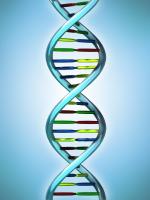|
This section contains 1,833 words (approx. 7 pages at 300 words per page) |

|
Overview
A successful approach to proving that genes are located on the chromosomes in a specific linear sequence evolved in the laboratory of Thomas Hunt Morgan (1866-1945). Using the fruit fly, Drosophila melanogaster, as their model system, Morgan and his research associates in the famous "fly room" at Columbia University—Alfred H. Sturtevant (1891-1971), Calvin B. Bridges (1889-1938), Hermann J. Muller (1890-1968), Curt Stern (1902-1981), and others—exploited correlations between breeding data and cytological observations to define and map the genes on the chromosomes. Morgan's fly room became a distinguished center of genetic research and a magnet for both ambitious young scientists and well-established senior scientists.
Background
By 1910 experiments carried out by Walter S. Sutton (1877-1916), Theodor Boveri (1862-1915), Nettie M. Stevens (1861-1912), Edmund B. Wilson (1856-1939), and other scientists had provided...
|
This section contains 1,833 words (approx. 7 pages at 300 words per page) |

|


